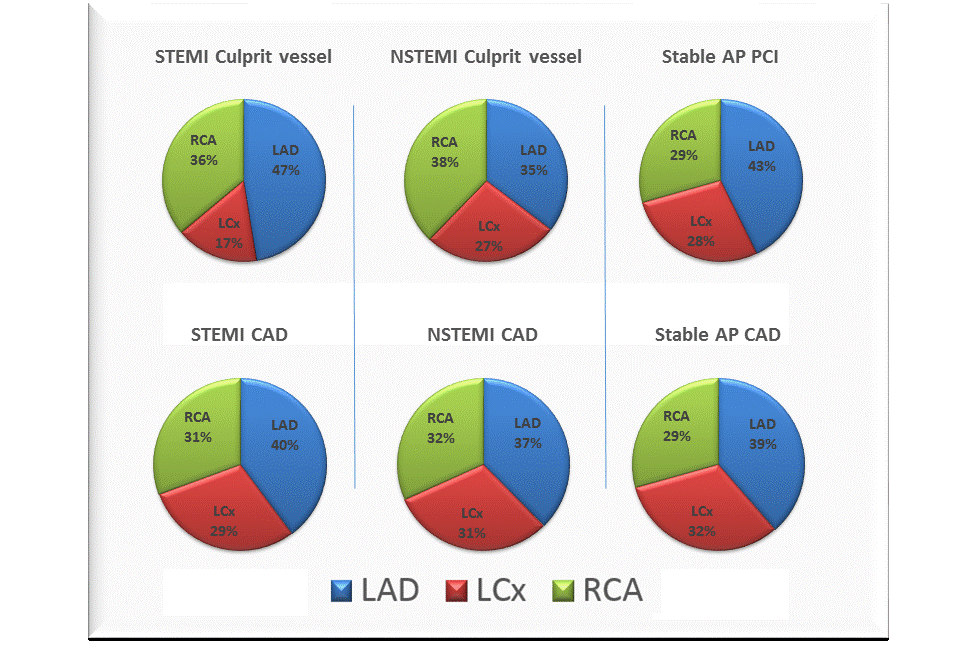 Background: The distribution of the culprit coronary arteries is expected to be equally divided among the major coronary arteries in the different clinical presentations of coronary artery disease (CAD): ST elevation myocardial infarction (STEMI), NSTEMI and stable angina.
Background: The distribution of the culprit coronary arteries is expected to be equally divided among the major coronary arteries in the different clinical presentations of coronary artery disease (CAD): ST elevation myocardial infarction (STEMI), NSTEMI and stable angina.
The objective of this study was to observe whether the representation of the different "culprit arteries" was similar in these different clinical scenarios.
Methods: Consecutive coronary angiographies of 431 patients with stable angina, 137 with NSTEMI and 141 with STEMI were retrospectively reviewed. The culprit coronary artery was defined as the one with a lesion requiring an intervention. Total CAD distribution was also registered. Distribution analysis was done using chi square test to compare the prevalence of the culprit artery between the three clinical manifestations of CAD.
Results: In patients with either stable angina or NSTEMI, there was an equal distribution between LAD, RCA and CX as the culprit coronary artery (P=0.176 and 0.56 respectively). However, in patients with STEMI, the CX was significantly less likely to be involved in comparison with either the LAD or the RCA who had similar prevalences (P=0.015).The involvement of CX as culprit artery was also significantly lower in patients with STEMI compared to stable angina patients(P=0.006),and NSTEMI (P=0.035). In all subgroups the coronary distribution of CAD (all lesions) was equal and similar (figure-1).
Conclusion: The CX was found to be the culprit artery in STEMI significantly less than the LAD/RCA. This phenomenon is in contrast to the even distribution of CX/LAD/RCA CAD in these patients and the distribution of culprit lesions in NSTEMI and stable angina. We hypothesize that atherosclerosis in the CX may be less prone to plaque rupture leading to STEMI due to decreased shear forces resulting from its right angular branching anatomy from the main flow route.


